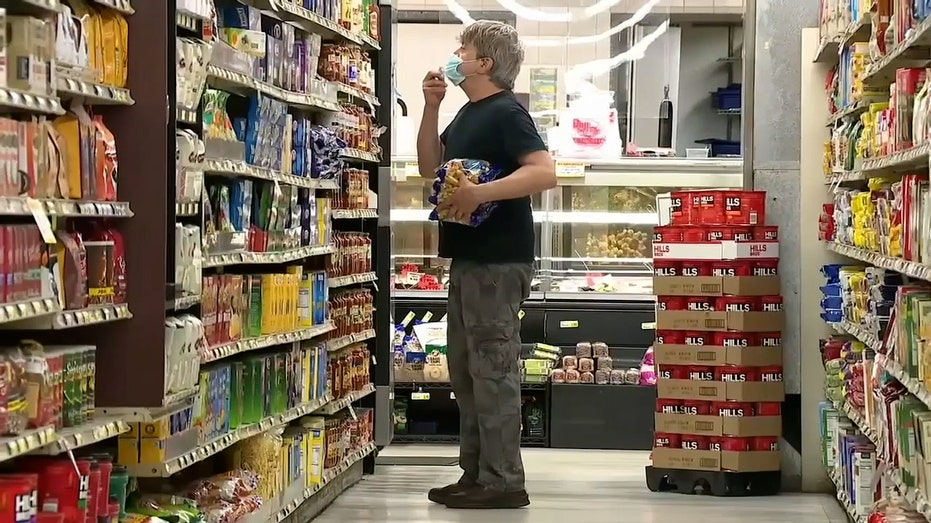FOX Business Flash top headlines for July 27
Check out what’s clicking on FoxBusiness.com.
Although inflation — which surged to 9.1% in June — is driving up the cost of everyday goods, consumers are feeling a significant amount of pain when it comes to buying food.
According to the Consumer Price Index (CPI) – which is a broad measure of the price for everyday goods – food prices have outpaced overall inflation, rising 10.4% in June compared to a year ago. This takes into account food at home and at restaurants.
Inflation for food-at-home, which accounts for grocery store and supermarket food purchases, rose even higher to 12.2%, underscoring how consumers are not getting much reprieve by trying to cook at home.
FOOD PRICES 'CONTINUE TO RISE,' OIL REACHED 'PEAK': BILLIONAIRE SUPERMARKET OWNER
A growing number of seniors have now turned to food assistance programs according to the Senior Citizens League. (Fox News / Fox News) The U.S. Department of Agriculture (USDA) recently raised its forecast on food price increases for 2022. The agency now estimates that all food prices will increase between 8.5% and 9.5% in 2022. Prices for food-away-from-home are expected to increase 6.5% to 7.5%, and prices for food-at-home are predicted to grow 10% to 11%. Katherine Cullen, the senior director of industry and consumer insights for the National Retail Federation — the nation's largest retail trade group — told FOX Business there are multiple variables currently impacting the cost of food. INFLATION HAS 'FINALLY COME TO A HEAD WITH THE CONSUMER': EDDIE GHABOUR This includes the war in Ukraine, ongoing shortages in the labor market, fuel costs, droughts and other natural disasters in key markets where wheat and corn are sourced. Those factors drive up the costs of products that rely on those items as well as the cost of animal feed, according to Cullen. Aside from natural disasters, Cullen noted an outbreak of avian flu drove up the cost of poultry and eggs. Meredith Wilson, chief executive officer of strategic intelligence and advisory firm Emergent Risk International, told FOX Business that food price inflation, which piggybacks on energy price inflation, is hitting families particularly hard because costs accumulate with each step along the supply chain. "Inflation accumulates as it makes its way through the supply chain," Wilson said. "In the end, the products that they buy at the store are a triple whammy — pricing in inflation for all of the inputs and costs before it gets to them — the consumer," Wilson said. For people on a budget, these price increases "can be very difficult and lead to them cutting back on healthier foods and products, which tend to be more expensive, leaving them buying lower quality and lower nutrition foods," she said. The increasing levels of food and fuel inflation are affecting how customers spend. Even Arkansas-based Walmart — the nation's largest retailer — recognized that the rising costs for necessities for things such as food and gas were causing shoppers to pull back on discretionary items. "The increasing levels of food and fuel inflation are affecting how customers spend," Walmart CEO Doug McMillon said in an earnings report Monday. A shopper inside a grocery store in San Francisco, California on Monday, May 2, 2022. (David Paul Morris/Bloomberg via Getty Images / Getty Images) CLICK HERE TO READ MORE ON FOX BUSINESS Source: Read Full Article

To see how much food prices have changed, FOX Business broke down the cost increases for common dinner items using CPI data:







